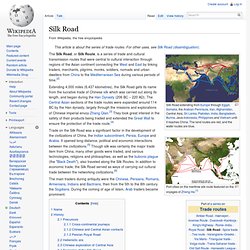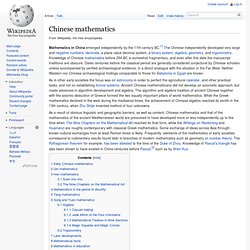

Chinese History. Ancient China. Internet East Asian History Sourcebook. There is no way of avoiding the fact that China is the central culture of Eastern Asia. Massively larger than any of her neighbors, China may have developed its cultural forms in relative isolation, but since the advent of Buddhism has both absorbed outside influences and disseminated its own culture. Japanese, Korean and Vietnamese cultures are not comprehensible without taking into account power of Chinese culture in art, literature and religion. Chinese culture itself is highly complex, and the other East Asian cultures also reflect local circumstances and traditions.
Qin Dynasty 秦 science, technology and inventio. History of China, China History, China History guide, Chinese hi. Electronic Passport to Chinese History. From at least 1766BCE to the twentieth century of the Common Era, China was ruled by dynasties.

A dynasty is a family that passes control from one generation to the next. A dynasty does not have to last for a long time. One Chinese dynasty lasted more than 800 years while another lasted only fifteen years. advertisement The ancient Chinese believed their ancestors in heaven had chosen their leaders. Category:Han Dynasty. History of China. Chinese civilization originated in various regional centers along both the Yellow River and the Yangtze River valleys in the Neolithic era, but the Yellow River is said to be the cradle of Chinese civilization.

With thousands of years of continuous history, China is one of the world's oldest civilizations.[1] The written history of China can be found as early as the Shang Dynasty (c. 1700–1046 BC),[2] although ancient historical texts such as the Records of the Grand Historian (ca. 100 BC) and Bamboo Annals assert the existence of a Xia Dynasty before the Shang.[2][3] Much of Chinese culture, literature and philosophy further developed during the Zhou Dynasty (1045–256 BC). The Zhou Dynasty began to bow to external and internal pressures in the 8th century BC, and the kingdom eventually broke apart into smaller states, beginning in the Spring and Autumn Period and reaching full expression in the Warring States period.
Prehistory Paleolithic Neolithic. The Silk Road. Silk Road. Silk Road extending from Europe through Egypt, Somalia, the Arabian Peninsula, Iran, Afghanistan, Central Asia, Sri Lanka, Pakistan, India, Bangladesh, Burma, Java-Indonesia, Philippines and Vietnam until it reaches China.

The land routes are red, and the water routes are blue. Port cities on the maritime silk route featured on the voyages of Zheng He.[1] Chinese mathematics. Mathematics in China emerged independently by the 11th century BC.[1] The Chinese independently developed very large and negative numbers, decimals, a place value decimal system, a binary system, algebra, geometry, and trigonometry.

Knowledge of Chinese mathematics before 254 BC is somewhat fragmentary, and even after this date the manuscript traditions are obscure. Dates centuries before the classical period are generally considered conjectural by Chinese scholars unless accompanied by verified archaeological evidence, in a direct analogue with the situation in the Far West. The science of mathematics is looked at with such importance in. Chinese overview. Version for printing Several factors led to the development of mathematics in China being, for a long period, independent of developments in other civilisations.

The geographical nature of the country meant that there were natural boundaries (mountains and seas) which isolated it. On the other hand, when the country was conquered by foreign invaders, they were assimilated into the Chinese culture rather than changing the culture to their own. As a consequence there was a continuous cultural development in China from around 1000 BC and it is fascinating to trace mathematical development within that culture. There are periods of rapid advance, periods when a certain level was maintained, and periods of decline. The first thing to understand about ancient Chinese mathematics is the way in which it differs from Greek mathematics.